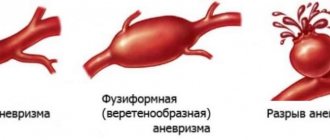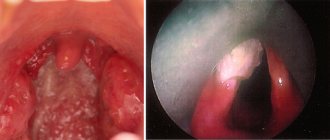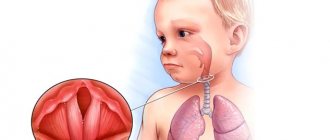The brain is a complex organ that controls all the vital functions of our body - thoughts, speech and body movement. The formation of a brain tumor and its treatment often leads to significant changes in these processes for life. Therefore, it is very important to detect the development of a neoplasm in a timely manner.
In this article, we tell you how to recognize brain cancer: what you should pay attention to, when it’s time to make an appointment with a doctor, whether brain cancer can be cured, what methods of diagnosing and treating this disease exist.
Symptoms of brain cancer
Brain cancer is characterized by the following symptoms:
Pain syndrome in the head, a headache that can appear periodically or be present constantly. As the brain tumor enlarges, the pain intensifies, and in some cases the patient may lose consciousness.
- Visual impairment, double objects.
- The appearance of attacks of dizziness.
- Constantly rising temperature.
- Fatigue, tiredness
- Numbness, impaired movement.
- The appearance of hallucinations.
- Sharp weight loss.
- Impaired consciousness.
- The appearance of vomiting.
- Hearing loss.
All symptoms of brain cancer occur due to the fact that the tumor grows and compression of the brain occurs. Its intensity depends on the location, size of the tumor and which parts of the brain are located nearby.
We strongly recommend that you undergo an annual routine brain examination, which does not take much time and is necessary for every person. Since brain cancer can develop asymptomatically!
Procedures and operations
Brain cancer is a serious disease and tumor removal is important to perform accurately, so a neuronavigation system is used during the operation. Before surgery, the patient’s research data is entered into the navigation system program, and a 3D computer model of the brain with tumors and blood vessels is obtained, which helps virtually plan the operation. Surgical treatment is based on the principle: extracerebral tumors are removed completely, and intracerebral tumors are removed as much as possible, so that brain function does not suffer. Any operation should involve minimal trauma, preservation of brain structures, blood vessels and veins. Some areas of the brain are considered inoperable - these are the motor and speech areas.
Minimally invasive surgery to remove a tumor is performed using laser, stereotactic and endoscopic techniques. Minimally invasive operations are performed through endonasal access (through the nostril), supraorbital (through an incision above the eyebrows), retrosigmoid (incision behind the ear), as well as through any point convenient for removing deep-lying tumors. Minimally invasive approaches are as effective as invasive ones. If the operation is performed on functionally significant areas, then laser technologies are used. This could be laser thermal destruction. For deep-lying tumors, brachytherapy and photodynamic therapy are used to destroy them.
Highly effective technologies allow treatment without surgery. These include radiosurgery methods: linear accelerator, gamma knife. However, they can be used for small lesions.
Gamma Knife is a form of radiation therapy. This ultra-precise method destroys even several formations per session. The method is applicable for multiple lesions (tumors of metastatic origin). The CyberKnife system is equipment based on a linear accelerator that delivers high doses to the tumor and destroys it. The operation does not require open intervention. If the tumor is large, the bulk of the tumor is first surgically removed, and then irradiation with the CyberKnife system is used.
Boron-neutron capture therapy method. With this method of exposure, the destruction of a tumor that has accumulated the boron-10 isotope is carried out by neutron irradiation. Boron accumulated in cells increases sensitivity to radiation. Boron isotopes absorb neutrons and a “nuclear” reaction occurs, during which energy is released that destroys the new formation. Brachytherapy has not become widespread. It is carried out by implanting radioactive sources (iridium-192, iodine-125, palladium-103) into the tumor tissue.
Before the operation, the possibility of its implementation and safety are taken into account. Without these predictions, surgical treatment is considered inappropriate. With any type of intervention, consequences are possible in the form of disturbances in movement, speech, hearing, vision, reading, and mental changes. It all depends on the location of the tumor and the degree of trauma to surrounding tissues. When a pituitary tumor is removed, hormonal function is disrupted. Motor disturbances that occur immediately after surgery are associated with cerebral edema. But with the use of decongestants, patients recover quickly.
CAUSES OF BRAIN CANCER
There are risk factors for brain cancer; it is quite difficult to name the exact cause of the disease:
- Radiation therapy performed for other tumor diseases.
- Accommodation near high-voltage lines within a radius of 500 meters.
- It most often affects older people, although brain cancer also occurs at a young age.
- Hereditary factors increase the risk of the disease.
- Constant contact with toxic substances.
- Alcohol and smoking abuse.
- Infectious and viral pathogens.
- Immune system disorder.
- Traumatic brain injuries.
- Hormonal disorders.
Until now, science has not come to the exact results of studying the causes of the disease; these are only factors that provoke the development of brain cancer.
Signs in women
The first signs of a brain tumor in women are similar to those observed in men. Therefore, there is no need to talk about specific signs of the development of tumors in women.
Signs often repeat those of other pathological conditions, for example, headache, tinnitus, decreased vision, nausea and others.
However, symptoms that last a long time (several weeks) and are persistent, increasing in nature, indicate the occurrence of tumor processes.
Therefore, it is important to seek medical help as early as possible. This will allow diagnosis and effective treatment methods to be applied.
DIAGNOSIS OF BRAIN CANCER
If you experience the above symptoms or are at risk, it is recommended to consult a neurologist, therapist, or ophthalmologist. The specialist will take a history and examine the patient. Magnetic resonance imaging of the brain is prescribed.
MRI with contrast
This study helps to assess brain activity, blood flow in the brain, metabolic processes, detect metastases, and distinguish benign from malignant tumors.
- Computed tomography, which determines the location and size.
- Positron emission tomography
- Single photon emission computed tomography
- Magnetoencephalography
- A spinal tap is performed to collect cerebrospinal fluid material and test it for cancer cells.
- Biopsy. The procedure allows you to determine the type of cancer cells.
If you suspect brain cancer, your doctor will recommend that you undergo the necessary examination, depending on your symptoms.
Early diagnosis of the disease allows for guaranteed rehabilitation treatment in a short time!
Make an appointment
Onko is located in Moscow, in the Central Administrative District (CAO), next to several metro stations: Novoslobodskaya, Tverskaya, Chekhovskaya, Belorusskaya and Mayakovskaya. You can contact us at any time, because we work seven days a week and even on holidays. To make an appointment with a doctor, select one of the following options:
- call +7 (495) 775-73-60;
- through an online form on the website;
- order a call back.
TYPES OF BRAIN CANCER
Brain tumors are classified depending on location:
Neuroma is characterized by damage to the cranial nerves.
Sarcoma develops in connective tissue cells
Glioma develops in nerve tissues.
Meningioma affects the meninges
Pituitary adenoma is localized in the gland.
Brain tumors can be primary or secondary.
Primary tumors are formed from brain tissue, membranes, cranial nerves, and secondary tumors are metastases to the brain from other organs.
Foci in the nervous system are detected in lymphomas.
Secondary brain tumors are more common than primary ones.
Pathogenesis
With any tumor, the defining feature is cell proliferation that gets out of control. The cause of this reproduction is an oncogene. Cell proliferation, invasive growth and the immune response of cells are interrelated, but are independent processes associated with genetic changes. Thus, the TSC-22 gene has been studied, which is important in various malignant brain tumors. In brain gliomas, the metabolism of non-heme iron is important.
Changing the cell genome activates antitumor immunity. However, the immune system also contributes to tumor progression by producing an immunogenic tumor phenotype.
As the tumor grows, the following occurs:
- its invasion into surrounding tissues and their destruction;
- compression of underlying tissues;
- increased intracranial pressure;
- cerebral edema;
- difficulty in the outflow of cerebrospinal fluid;
- the growth of new vessels in the tumor, becoming a source of bleeding;
- disturbance of venous and arterial blood flow.
STAGES OF BRAIN CANCER
A cancerous tumor goes through several stages in its development.
1. First stage. At this stage, a person develops a small number of cancer cells; the malignant neoplasm is characterized by slow growth.
2. Second stage. At this stage, the tumor grows and grows into other brain tissues.
3. Third stage. Here, accelerated proliferation of cancer cells is observed. They spread to large areas of healthy tissue.
4. Fourth stage. It is the most dangerous; oncological tumors are difficult to treat.
Risk factors and prevention of head cancer
A risk factor is anything that increases a person’s likelihood of developing cancer. And although risk factors often influence the development of cancer, most do not directly cause it. Some people with multiple risk factors may never develop cancer, while others with no known risk factors will. Knowing your risk factors and discussing them with your doctor can help you make more informed lifestyle and health care choices.
There are 2 substances that significantly increase the risk of developing head and neck cancer:
- Tobacco. Tobacco use means: smoking cigarettes, cigars or pipes; chewing or snuff tobacco. This is the most significant risk factor for head and neck cancer.
- Alcohol. Alcohol abuse increases the risk of developing malignant neoplasms. .
Using alcohol and tobacco together increases this risk even further.
Factors that may increase your risk of developing head and neck cancer also include:
- Prolonged exposure to the sun. This is especially true for cancers in the lip area, as well as cancers of the scalp and neck.
- Human papillomavirus (HPV). Having sex with a person with HPV is the most common way to become infected with HPV. There are different types of HPV, called strains.
- Epstein-Barr virus (EBV). Exposure to EBV (the virus that causes mononucleosis or “mono”) plays a significant role in the development of nasopharyngeal cancer.
- Floor. Men are 2–3 times more likely to develop head and neck cancer. However, rates of head and neck cancer in women have been increasing for decades.
- Age . People over the age of 45 are more at risk of cancer.
- Poor oral and dental hygiene.
- Environmental or occupational inhalants . Inhalation of various chemical compounds (paint materials, asbestos) can increase the risk of developing a dangerous disease.
- Marijuana use.
- Poor nutrition. A diet low in vitamins A and B increases the risks.
- Gastroesophageal reflux disease (GERD) and laryngopharyngeal reflux disease (LPRD) . Reflux is associated with tumor growth in the area.
- Weakened immune system.
- Exposure to radioactive radiation. Directly related to the development of the oncological process.
- History of head and neck cancer. People who have had head and neck cancer once have a higher chance of developing another cancer in the future.
Prevention
Quitting tobacco is the most important component of prevention.
- Avoiding alcohol and marijuana use.
- Regular use of sunscreen, including lip balm with an adequate sun protection factor (SPF)
- Reducing the risk of getting HPV by getting the HPV vaccine or by limiting the number of sexual partners. Using a condom during sexual intercourse cannot completely protect against HPV.
- Maintain proper denture care. Poorly fitted dentures can trap carcinogens from tobacco and alcohol. Dentures should be removed every night and cleaned and washed thoroughly every day.
Treatment of brain cancer
Treatment of brain cancer is a set of measures aimed at getting rid of the disease, improving the patient’s well-being and returning him to a full life.
There are protocol methods for treating brain cancer, such as radiotherapy, surgery, and chemotherapy.
The Russian-Japanese Oncology Center uses only proven and well-proven methods.
The maximum effectiveness of treatment for brain cancer is achieved only if there is a strong desire of the patient for recovery, the support of loved ones, and the trust of the doctor and the patient. Treatment is carried out in accordance with high international standards, using the scientific clinical base and experience of scientists from the Russian Federation and Japan.
Statistics from the Oncology Center show stable results in the treatment and rehabilitation of brain cancer.
Patients who applied at stage I.
Within a year after the discovery of brain cancer, after rehabilitation treatment, 100% of those who applied survive and live a full life for more than 20 years - almost 90% of patients
Patients who applied at stage II.
Within a year after the discovery of brain cancer, after rehabilitation treatment, 100% of those who applied survive and live a full life for more than 15 years - almost 72% of patients
Patients who applied at stage III.
Within a year after the discovery of brain cancer, after rehabilitation treatment, 100% of those who applied survive and live a full life for more than 10 years - almost 48% of patients
Patients who applied at stage IV.
Within a year after the discovery of brain cancer, after rehabilitation treatment, 100% of those who applied survive and live a full life for more than 5 years - almost 28% of patients
REHABILITATION OF PATIENTS
THE RUSSIAN - JAPANESE ONCOLOGICAL CENTER HAS DEVELOPED REHABILITATION PROGRAMS FOR PATIENTS AFTER TREATMENT, CHEMOTHERAPY AND RADIATION THERAPY.
Rehabilitation is aimed at areas of the brain that are responsible for important body functions: speech, movement, sensory organs, thinking, memory.
With rehabilitation treatment, the risk of complications after chemotherapy is reduced to a minimum. The patient does not experience severe symptoms after the procedures and does not lose quality of life.
Feel the quality of life after rehabilitation!
The patient should never forget that brain cancer is an aggressive type of cancer and develops quite quickly. Relapses are possible, so we make sure to monitor our patients at least 2 times a year and repeat the supporting set of rehabilitation measures after a year or a year and a half.
Our experience shows that treatment of brain cancer is always possible, even regardless of its stage and location.
The developed and tested methods of our Oncology Center are aimed at curing this disease, reducing its symptoms, preventing the progression of the disease and improving the quality of life!
Treatment under compulsory medical insurance policy
You can receive FREE medical care at the Oncology Center under the State Guarantee Program of Compulsory Medical Insurance (Compulsory Medical Insurance) and High-Tech Medical Care.
The service is valid for all Russian citizens.
You can find out details on which nosologies and services this program works here.
For consultation and making an appointment, call +7 or use the form below.
Treatment of a brain tumor under compulsory medical insurance is for many patients the only opportunity to cope with the disease. Oncopathologies take a long time to be treated, operations and procedures require significant financial investments. To save patients from large financial losses, the oncology department provides treatment according to quotas, which are financed from the federal and local budgets. This opportunity is available to every Russian citizen with a medical insurance policy. But preference is given to patients for whom treatment is a matter of life and death. As part of compulsory medical insurance assistance, we provide:
- radiation therapy;
- chemotherapy;
- surgical operations;
- diagnostic studies such as PET/CT and IHC.
Patients will have to confirm the need for free treatment with relevant documents, on the basis of which a decision will be made. Such applications are reviewed by a special commission of either the clinic, the health department, or the medical institution itself that provides treatment services under compulsory medical insurance. If you come to us right away, you will significantly shorten the path to recovery. Our doctor will prepare a referral for you with an extract, which will indicate the diagnosis and the results of the studies performed. The complete list of documents for the regional health authority looks like this:
- doctor's referral;
- application for treatment of a brain tumor under the compulsory medical insurance policy;
- Russian passport and insurance policy;
- SNILS;
- consent to the processing of personal data;
- pension certificate (for pensioners).











